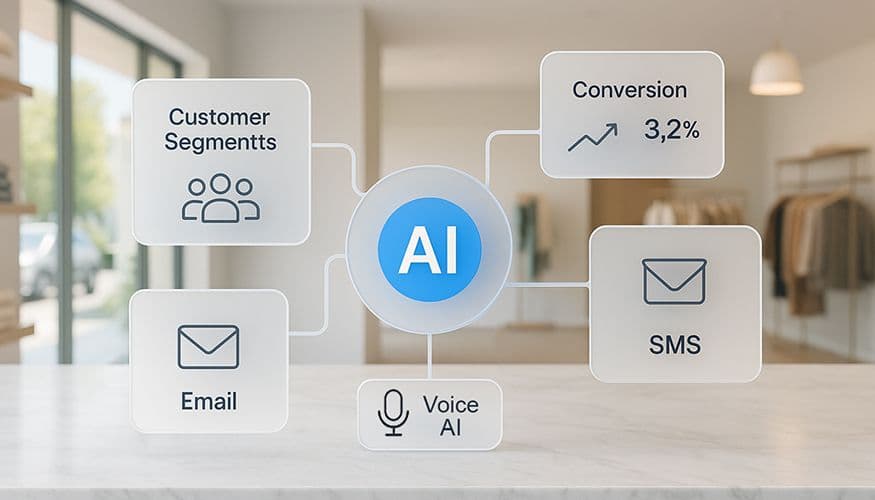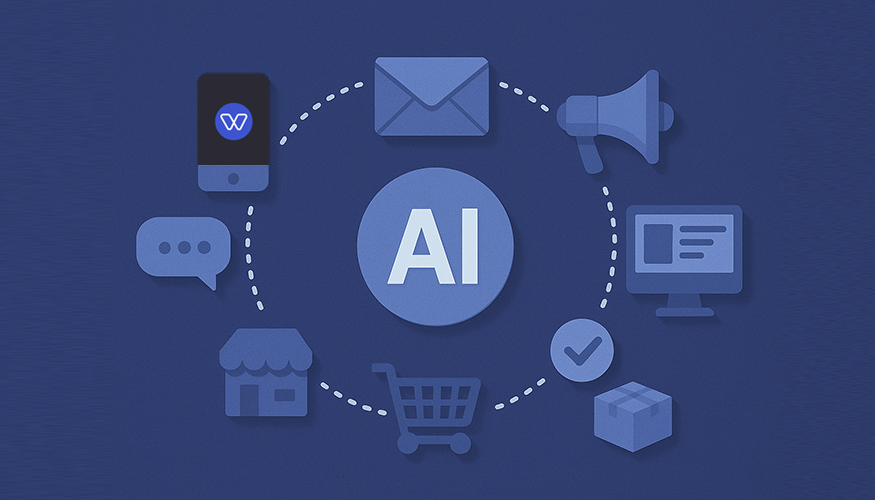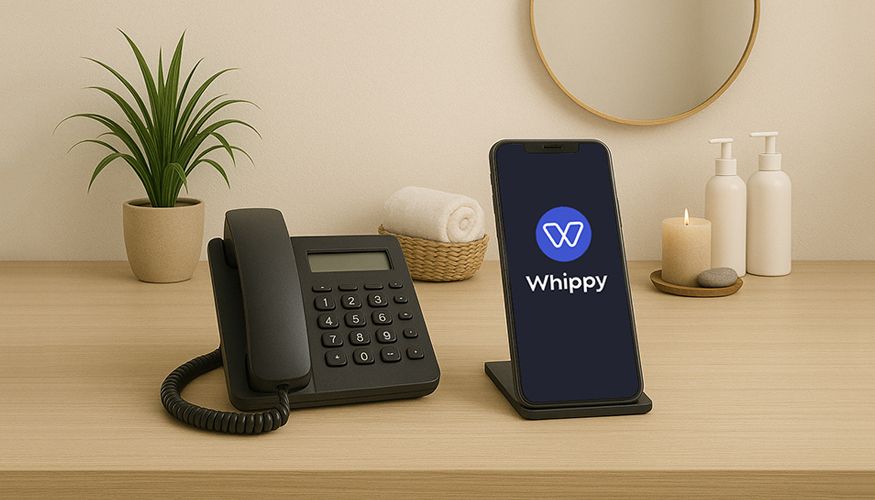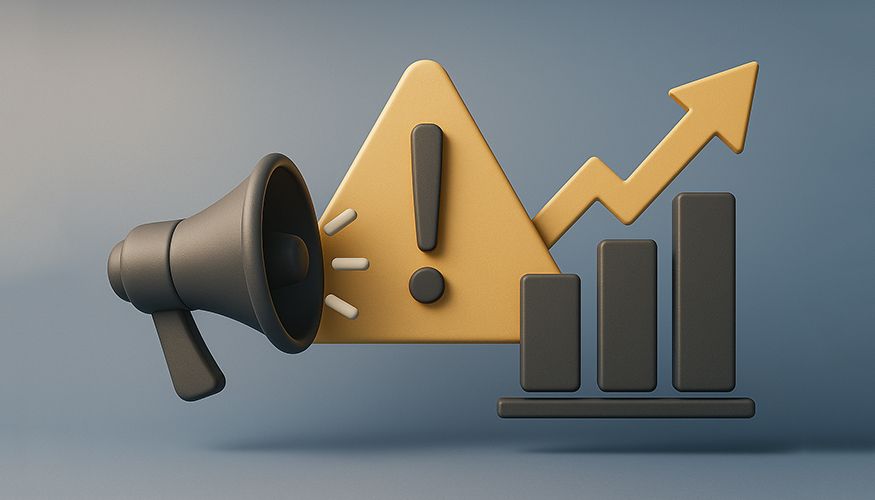Table of Contents
- TL;DR
- What is Retail Marketing Automation (with AI)?
- How Marketing Automation Works in Retail
- Benefits: Why Marketing Automation Works for Retail Companies
- Core Strategies (with AI) to Scale Results
- Tool Stack: What to Look for in a Retail Marketing Platform
- 90-Day Implementation Playbook
- KPIs & Measurement
- Use Cases Library
- 1. Automating Retail Marketing for Replenishment
- 2. Retail Marketing Campaigns Automation for Seasonal Drops
- 3. Clienteling Outreach After Fitting-Room Sessions
- 4. AI-Powered Personalization by Propensity
- 5. Retail Brand Automation for Regional Localization
- 6. Recommendation Systems for Cross-Selling
- 7. RCS Marketing Rich Cards for New Collections
- 8. QR Codes for Reviews and Size Guides
- 9. Retail Data-Driven Marketing for Margin Protection
- 10. Campaign Optimization with Multi-Armed Bandits
- Buyer’s Guide: Selecting Retail Marketing Automation Tools
- FAQs
- Put It All Together (Next Steps)
Try Whippy for Your Team
Experience how fast, automated communication drives growth.

Retail marketing automation with AI is a way to use customer data, rules, and machine learning in marketing to plan, launch, and improve retail campaigns↗.
It delivers both AI-powered marketing and artificial intelligence marketing capabilities, enabling tailored shopping experiences. These can run across email, SMS, WhatsApp, RCS, social, apps, and in-store touchpoints.
This strategy—often seen in retail marketing examples from both online and physical stores—unifies the principles of digital marketing for retail into a single, coordinated system. The result is improved personalization, greater efficiency, and higher revenue, all while reducing manual work.
TL;DR
- What it is: AI orchestrates campaigns, segmentation, and personalization across all channels using digital marketing automation↗ for retail.
- Why it matters: Higher ROI, faster execution, and measurable marketing automation benefits for retail such as better customer engagement and retail customer retention.
- How to start: Connect data (CDP + CRM integration↗ + POS), define goals, automate customer journeys, measure results, and refine.
- Where to go next: Explore a retail marketing platform with strong AI-driven analytics, content automation, retail promotional tools, and clienteling features.
- Quick win: Start with a simple automation—such as scheduling SMS offers to match customer purchase patterns. Learn how to schedule a text↗
What is Retail Marketing Automation (with AI)?
Retail marketing automation is the use of software and retail marketing technology to plan, trigger, and optimize campaigns without constant manual work. It builds on proven retail marketing ideas and combines them with AI to deliver scalable, personalized experiences. It handles tasks like campaign management, audience segmentation, and customized targeting so your marketing team can focus on strategy instead of repetitive execution.
When you add AI—especially in the form of AI marketing for retail stores—the system becomes smarter. It uses predictive analytics, machine learning, retail analytics, and recommendation systems to personalize offers and improve the retail customer experience.
It can also forecast demand and boost results automatically over time, making your marketing more precise, efficient, and impactful.
Typical Channels for Retail Marketing Automation:
Email marketing automation for retail
Retail SMS marketing
Conversational messaging (e.g., chatbots, virtual assistants)
WhatsApp marketing
RCS marketing
App push notifications
Direct mail with data-driven targeting
How Marketing Automation Works in Retail
AI-powered retail marketing automation connects your data, customers, and channels into one intelligent system:
Unify your data
Integrate POS, ecommerce, apps, and loyalty systems into a Customer Data Platform (CDP) for a single view of every shopper.
Segment intelligently
Use AI predictive analytics to group customers by behavior, loyalty, and purchase likelihood.
Automate journeys
Trigger omnichannel campaigns like welcome flows, replenishment reminders, and win-back offers automatically.
Personalize at scale
Deliver tailored messages using content automation and AI recommendations.
Measure and optimize
Track KPIs such as conversion rate, AOV, and repeat purchase rate with real-time optimization.
The result: seamless campaigns, smarter personalization, and measurable growth—all with less manual work.
Benefits: Why Marketing Automation Works for Retail Companies
1. Efficiency in Marketing
Example: Automated workflows send welcome emails, replenishment reminders, and targeted promotional offers without manual input.
Why It Works: By using automated retail marketing software, your marketing team can replace repetitive tasks with scalable automation tasks, freeing up time to focus on strategic retail marketing strategies and creative campaigns.
2. Higher Revenue Potential
Example: AI detects that a customer who recently purchased running shoes is also likely to buy sports apparel. This insight triggers a targeted cross-sell email and an in-store offer.
Why It Works: AI retail marketing drives both retail sales optimization and retail business growth marketing by pinpointing the best pricing strategy and product pairings for each customer.
With seamless integration between POS, ecommerce platforms, and marketing tools for retail stores, these upsell and cross-sell opportunities are delivered at exactly the right moment—whether the customer is shopping online or in a physical store.
3. Better Customer Experience (CX)
Example: A loyalty program or rewards programs member receives a birthday discount code, followed by personalized product suggestions based on purchase history.
Why It Works: Tailored marketing builds relationships by delivering timely, relevant messages that match what customers expect. Mapping the customer journey in a retail marketing platform ensures each touchpoint enhances customer engagement retail, strengthens loyalty, and aligns every interaction with what customers expect—whether in-store, online, or through follow-up campaigns.
Post-purchase touchpoints can be used to request feedback and showcase customer testimonials using tools like Whippy’s Reviews↗, building trust while encouraging repeat visits.
4. Consistency Across Campaigns
Example: Seasonal promotions launch simultaneously across email, SMS, and app notifications, each using the same creative and messaging.
Why It Works: With retail promotional tools and retail marketing campaigns automation, you can maintain a steady brand presence across all channels. This ensures a unified experience whether customers are browsing online or shopping in-store.
5. Scalability for Any Team Size
Example: A small marketing team runs multiple complex campaigns for thousands of customers through automated workflows.
Why It Works: Omnichannel engagement via marketing automation retail lets you manage large audiences without expanding headcount. The system provides actionable insights so campaigns keep improving, even with limited resources.
Core Strategies (with AI) to Scale Results
Personalization & Predictive Marketing
AI-powered analytics go beyond basic “you might like” recommendations. By analyzing context, seasonality, and customer intent, AI identifies the next best action for every shopper.
For instance, customers who buy kitchen appliances might receive follow-up offers for cookware or cleaning tools. As shown in leading retail marketing case studies, when this intelligence is built into your automated retail marketing software, it enables highly relevant offers across both online and physical stores—at scale and in real time.
Lifecycle & Loyalty Management
Modern retail marketing automation makes loyalty effortless. Integrated CDP systems can automatically send points reminders, VIP early-access offers, and referral rewards—keeping your best customers active without extra work.
AI-driven segmentation groups members by engagement level, spend, or churn risk, ensuring each receives personalized offers that deepen loyalty and drive repeat purchases.
Omnichannel Messaging
Effective omnichannel retail marketing means consistency everywhere your customers engage. Combine email marketing automation, retail SMS marketing, and WhatsApp marketing to maintain ongoing conversations—especially when using SMS marketing for retail stores to reach on-the-go shoppers instantly.
Enhance reach with RCS campaigns, app push notifications, or direct mail to bridge online and in-store experiences. The result: a seamless, connected brand presence that meets shoppers in their preferred channels—backed by actionable retail marketing insights from every touchpoint.
Voice AI for Customer Engagement
Voice AI brings conversational marketing to life—handling customer calls, kiosks, and smart devices with ease. It answers questions, checks orders, and recommends products using the same CDP, POS, and CRM data that power your other channels.
If a product is out of stock, Voice AI can instantly suggest an alternative and send a personalized coupon via SMS. This blend of human-like service and automation boosts satisfaction, loyalty, and conversion.
Learn more about Whippy’s Voice AI↗
In-Store to Digital Convergence
Tools like geofencing, beacons, and QR codes can trigger location-based offers when shoppers are near or inside a store. Combined with foot traffic analytics, retail analytics, and retail marketing analytics, these tools help refine displays and marketing campaigns.
For example, a shopper might scan a QR code in-store to get a personalized discount. That data goes into your retail marketing solutions for future targeting and optimization across campaigns. This creates a loop that connects your physical stores with your digital campaigns. You can even embed customer messaging↗ directly into your website or apps to capture leads instantly and guide shoppers from in-store interest to online purchase without friction.
Content Automation
Scaling creative assets is challenging for retailers with high SKU counts. Content automation tools—often part of the best marketing automation tools retailers cross-selling initiatives—allow marketing teams to quickly generate variations of product descriptions, banners, and emails while maintaining brand voice. For localized campaigns, AI can adapt messaging to reflect regional preferences or inventory availability. This ensures consistency while accommodating the nuances of different target audiences.
Retail Advertising Tools
Paid ads are still key for bringing in new customers. By automating prospecting and retargeting with retail advertising tools, you can make the most of your ad budget.
AI looks at actionable insights from past campaigns to improve targeting, ad creative, and bidding. For example, ads promoting a certain pricing strategy can be shown to segments most likely to buy—leading to better ROI.
Tool Stack: What to Look for in a Retail Marketing Platform
The right retail marketing platform should balance robust retail marketing platform features with seamless integration to your existing ecosystem. Whether you operate a small boutique or a global chain of physical stores, these features are non-negotiable:
CDP / Customer Data Platform or tight CRM integration for centralized data management.
AI-powered analytics for prediction, scoring, and trend forecasting.
Campaign management tools with a drag-and-drop automation builder for intuitive workflow design.
Omnichannel messaging support: email, SMS, WhatsApp, RCS, push, and in-store triggers.
Clienteling and conversational messaging capabilities for high-touch sales approaches.
Content automation with templates and dynamic blocks to accelerate creative production.
Retail marketing software integration with sales terminal systems, ecommerce platforms, and apps to ensure seamless integration.
Role-based access, audit trails, and ethical AI marketing controls for governance and compliance.
One-Glance Comparison (by Category)
Category | What it Does | Best For | Sample Features |
|---|---|---|---|
Data & Identity (CDP/CRM) | Unifies profiles; powers segmentation | Multi-brand retailers | ID resolution, events, customer data platform |
Journey Automation | Orchestrates flows & triggers | All sizes | Visual builder, split tests, marketing process automation |
AI & Analytics | AI marketing automation, AI-powered analytics | Advanced teams | Prediction, scoring, trend forecasting |
Messaging Channels | Email, retail SMS marketing, app | Growth & retention | Send-time AI, conversational messaging |
In-Store Tech | Connects offline to online | Brick-and-mortar | Geofencing, QR, beacons, promotion tracking |
Creative Ops | Content automation at scale | High SKU counts | Dynamic content, brand kits |
Clienteling | Human-assisted selling | Premium retail | Guided outreach, virtual assistants, chatbots |
If you’re evaluating multiple vendors, a retail marketing software comparison can help you identify the best match for your business. Look for platforms that not only meet today’s needs but also align with your long-term retail marketing strategies.
90-Day Implementation Playbook
Implementing retail marketing automation—especially when powered by AI—is not just flipping a switch. It requires a clear plan, the right retail marketing tools, a solid understanding of your target audience, and a focus on improving the retail customer experience from the start.
This 90-day action plan will guide you from setup to measurable results.
Days 1–30: Foundation
The first month is about building the structure you’ll need for long-term success.
Unify Data Sources into Your CDP
Connect store checkout systems, ecommerce platforms, mobile apps, and loyalty program data into a centralized Customer Data Platform (CDP) or a CRM with CDP-like features.
This integration gives you a unified, actionable view of every shopper. It enables data-driven decision making, precise targeting, and better use of retail analytics.
Define Clear, Measurable Goals
Set goals that are specific and trackable. Examples:
- Increase retention by 15%
- Improve average order value (AOV) by 10%
- Boost repeat purchases within six months
- Your goals should connect to both revenue growth (retail sales optimization, retail business growth marketing) and customer satisfaction.
Segment Your Audience
Group customers into segments such as:
- New shoppers
- Active buyers
- VIP/high-value customers
- Churn-risk profiles
- These segments form the base for personalized automation flows. They focus your campaigns on customers most likely to convert.
Prepare Core Content Blocks
Create reusable content for email marketing, retail email marketing, and retail SMS marketing.
Use content automation tools to build brand-consistent templates you can quickly adapt for different campaigns.
Days 31–60: Automate High-Impact Journeys
Once your foundation is ready, launch campaigns that bring fast results.
Implement High-ROI Automation Flows
Set up:
- Welcome and onboarding sequences for new sign-ups
- Cart abandonment and browse recovery flows
- Replenishment reminders
- Price-drop alerts
- Use machine-learning analytics to test pricing strategies and match the best offers to each segment.
Launch Retail Marketing Campaign Automation
Automate seasonal promotions, special sales, and product launches with your automated retail marketing software.
Test different coupons and promotions across channels. See which combinations work best for each customer group.
Enable Clienteling for In-Store Teams
Equip associates with clienteling tools linked to your CRM.
These tools use AI tools in marketing to give product suggestions and trigger personalized outreach—turning in-store visits into lasting relationships.
Days 61–90: Scale & Optimize
By month three, you’re ready to expand automation and push for higher results.
Add AI-Powered Retail Marketing Features
Bring in predictive analytics, machine learning in marketing, and customer support automation↗ for chatbots↗ and service workflows.
Use lead scoring and real-time optimization to fine-tune campaigns as they run.
Explore AI-driven marketing for online retail with recommendation systems and personalized product bundles.
Gamify and Reward Engagement
Add gamification and referral programs to increase participation in rewards programs and retail loyalty programs.
Send targeted coupons and promotions to your most engaged customers to boost retail customer loyalty.
Expand Omnichannel Reach
Add WhatsApp marketing, RCS marketing, app push notifications, and direct mail to your channel mix.
Make sure every channel is connected to your CDP so you can track and compare performance across your retail marketing tools.
Build an Executive Dashboard
Create a single dashboard for your key retail marketing performance metrics.
Track KPIs like:
- AOV
- Conversion rates
- Loyalty program participation
- ROI from both retail marketing tools and retail advertising tools
KPIs & Measurement
Tracking performance is the only way to know if your retail marketing automation efforts are paying off. For best results, tie every metric to a specific retail marketing strategy or automation flow.
Engagement Metrics
- Open and click-through rates for emails and SMS.
- App session frequency and dwell time.
- In-store visit frequency measured through foot traffic analytics.
Revenue Metrics
- Conversion rates from campaigns.
- Average Order Value (AOV) and Customer Lifetime Value (LTV).
- Return on Ad Spend (ROAS) and cross-selling performance.
Retention Metrics
- Repeat purchase rates.
- Churn reduction percentages.
- Loyalty program participation and points redemption rates.
Operational Metrics
- Time to launch new campaigns.
- Number of automation workflows running.
- Ratio of automated tasks vs. manual campaigns.
Example Ties to Journeys:
- Win-back Flow → Measurable uplift in repeat purchase rate.
- Price-Drop Alerts → Spike in conversions with minimal discount erosion.
- Geofenced Offer → Measurable lift in store visits via foot traffic analytics.
Use Cases Library
These proven marketing automation use cases retail—many of which appear in our broader retail marketing guide—can be adapted for your brand:
1. Automating Retail Marketing for Replenishment
Perfect for consumables like cosmetics, groceries, or pet supplies.
Use AI-powered analytics to calculate reorder timing and send reminders via retail SMS marketing.
2. Retail Marketing Campaigns Automation for Seasonal Drops
Plan months ahead and use content automation to localize campaigns for different markets.
3. Clienteling Outreach After Fitting-Room Sessions
Staff can log product interests into the CRM and follow up with conversational messaging.
4. AI-Powered Personalization by Propensity
Select targeted blocks for each user based on likelihood to buy a specific category.
5. Retail Brand Automation for Regional Localization
Adjust offers to reflect climate, events, and local preferences using retail digital marketing tools.
6. Recommendation Systems for Cross-Selling
Suggest accessories or complementary products at checkout or in follow-up communications.
7. RCS Marketing Rich Cards for New Collections
Use engaging visuals and CTAs directly in the messaging app.
8. QR Codes for Reviews and Size Guides
Link in-store signage to mobile content for enhanced customer engagement retail.
9. Retail Data-Driven Marketing for Margin Protection
Pause promotions for SKUs with limited stock or reduced margins.
10. Campaign Optimization with Multi-Armed Bandits
Let AI test subject lines, images, and offers in real time, automatically pushing the best performers.
Buyer’s Guide: Selecting Retail Marketing Automation Tools
Choosing the right marketing software for retail or retail marketing automation platform means finding a solution that has the features you need, works well with your current systems, and delivers a strong return on investment (ROI).
The right choice depends on your business size. Large retailers may need advanced, enterprise-grade platforms. Smaller stores might prefer marketing tools for small retail businesses that are easier to set up but still cover essential features like customer segmentation, email automation, and retail SMS marketing.
Make sure the platform supports all the channels your customers use. This could include email, SMS, WhatsApp, conversational messaging, push notifications, and in-store triggers. Covering every touchpoint helps you keep a consistent brand presence across both online and offline experiences.
Look for strong data features. The best marketing automation software often includes a Customer Data Platform (CDP), identity resolution, and real-time tracking. These tools give you a complete view of each customer so you can create accurate, personalized campaigns.
AI is now essential. Choose a platform that offers AI retail automation, predictive analytics, real-time optimization, and AI-powered reporting. These features can help you forecast customer behavior, personalize offers, and improve campaigns while they’re running.
Integrations matter, too. Your retail marketing platform should connect smoothly with your CRM, POS, ecommerce system, and other marketing tools for small retail businesses or enterprise-level tools. It should also include compliance and security features like role-based permissions, approval workflows, and ethical AI marketing controls.
Finally, think about future growth. Select marketing automation software that regularly adds new retail marketing tools, retail digital marketing features, and omnichannel automation. Make sure the price matches the value and revenue impact you expect.
Considering platform fit? Explore marketing automation for retail with Whippy—a flexible retail marketing platform designed to grow with your needs.
FAQs
Q: What is marketing automation in retail?
A: Marketing automation in retail uses software and technology to manage campaigns, segment audiences, personalize offers, and send messages across multiple channels.
It goes beyond scheduled emails—connecting your best retail marketing tools like retail loyalty programs, email systems, SMS platforms, and in-store triggers into one platform.
With a Customer Data Platform (CDP) or integrated CRM, teams get a single customer view to deliver consistent, relevant messages and enhance every touchpoint—online or in-store—for a stronger retail customer experience.
Q: How does AI help retail marketing automation?
A: AI enhances retail marketing automation with AI-powered marketing and artificial intelligence marketing capabilities that process vast customer data, find patterns, and act instantly.
It enables predictive analytics, predictive personalization, and recommendation systems to forecast behavior and deliver the right offers automatically.
Other tools—like lead scoring, real-time optimization, and AI-generated content—help personalize at scale, allowing retailers to offer tailored experiences without large teams.
Q: Which channels perform best?
A: Top channels for retail marketing automation include:
- Email marketing automation for retail – rich, story-driven messages
- Retail SMS marketing – quick, high-open-rate alerts
- WhatsApp marketing – conversational engagement
- RCS marketing – interactive, media-rich promotions
- App push notifications – instant updates and offers
- Targeted direct mail – trusted, physical touchpoints
Performance varies by audience and goals. Use real-time optimization to monitor results and reallocate budget to the channels driving the best ROI.
Q: What are must-have features of a retail marketing platform?
A: The best retail marketing platform combines automation with proven retail marketing best practices. Key features include:
- CDP or Customer Data Platform for unified profiles
- CRM integration for coordinated sales and marketing
- Journey builder for automated flows (welcome, win-back, loyalty)
- AI marketing automation with recommendations and trend forecasting
- Content automation for fast, consistent creative
- Clienteling tools for in-store associates with AI suggestions
- Deep analytics to track ROI and support retail sales optimization
Integration with ecommerce, landing pages, and conversational messaging enhances engagement across every channel.
Q: Is AI safe to use?
A: Yes—when guided by ethical AI marketing practices. Always explain how data is used, get customer consent, and allow preference control.
Regularly test AI outputs for bias or errors and maintain human oversight for sensitive campaigns. These safeguards build trust and ensure fair, transparent experiences.
Q: How big is AI in the retail market?
A: The AI in retail market is expanding rapidly, and the AI in retail market size continues to grow year over year—driven by the demand for personalization, efficiency, and measurable ROI.
As AI in retail grows, it’s becoming a core investment for retailers seeking a competitive advantage.
To maximize returns, align your AI marketing automation strategy with business goals and use tools for retail personalization, trend forecasting, and real-time optimization to stay ahead of customer expectations.
Put It All Together (Next Steps)
1. Define Clear Goals
Decide what success looks like for your retail marketing automation strategy—whether that’s boosting revenue, increasing retention, or enhancing the performance of your retail loyalty programs. Your objectives will guide every technology choice and campaign decision.
2. Unify Your Data
Integrate all customer touchpoints—POS, ecommerce, mobile apps, and loyalty systems—into a single customer data platform (CDP) with CRM integration. This unified view gives your marketing team the insights they need to make informed, data-driven decisions and deliver consistent customer experiences.
3. Launch Strategic Journeys
Start with three high-impact automation flows:
- Welcome for new customers
- Win-back for dormant customers
- Price-drop for high-intent shoppers
- Then, add one retail marketing campaigns automation for your next major promotion. Pair each with optimized landing pages to capture leads and convert potential customers.
4. Layer in AI for Performance Gains
Use predictive analytics, recommendation systems, and customized content to deliver the right message to the right customer at the right time. AI will help you uncover cross-selling opportunities, personalize at scale, and forecast trends that drive proactive marketing.
5. Iterate and Optimize
Track retail marketing performance metrics weekly to refine campaigns, and review monthly to evolve your overall strategy. Real-time optimization ensures you can pivot instantly, boosting ROI and keeping campaigns competitive.
Ready to see it in action?
Whippy’s retail marketing platform gives your team the best retail marketing tools—from AI-powered automation and analytics to in-store clienteling—all in one place.
Request Your Free Live Demo Today↗ and discover how to increase sales, scale customer-specific targeting, and streamline your entire retail marketing operation.
Table of Contents
Table of Contents
- TL;DR
- What is Retail Marketing Automation (with AI)?
- How Marketing Automation Works in Retail
- Benefits: Why Marketing Automation Works for Retail Companies
- Core Strategies (with AI) to Scale Results
- Tool Stack: What to Look for in a Retail Marketing Platform
- 90-Day Implementation Playbook
- KPIs & Measurement
- Use Cases Library
- 1. Automating Retail Marketing for Replenishment
- 2. Retail Marketing Campaigns Automation for Seasonal Drops
- 3. Clienteling Outreach After Fitting-Room Sessions
- 4. AI-Powered Personalization by Propensity
- 5. Retail Brand Automation for Regional Localization
- 6. Recommendation Systems for Cross-Selling
- 7. RCS Marketing Rich Cards for New Collections
- 8. QR Codes for Reviews and Size Guides
- 9. Retail Data-Driven Marketing for Margin Protection
- 10. Campaign Optimization with Multi-Armed Bandits
- Buyer’s Guide: Selecting Retail Marketing Automation Tools
- FAQs
- Put It All Together (Next Steps)
Try Whippy for Your Team
Experience how fast, automated communication drives growth.
Related Articles

Best AI Sales Tools to Close More Deals

Omnichannel Marketing Automation: Strategy & Tools

Salon Answering Service for Spas, Beauty & Wellness Venues

Common Marketing Automation Mistakes to Avoid

Online Marketing and Automation Solutions for Attorneys
